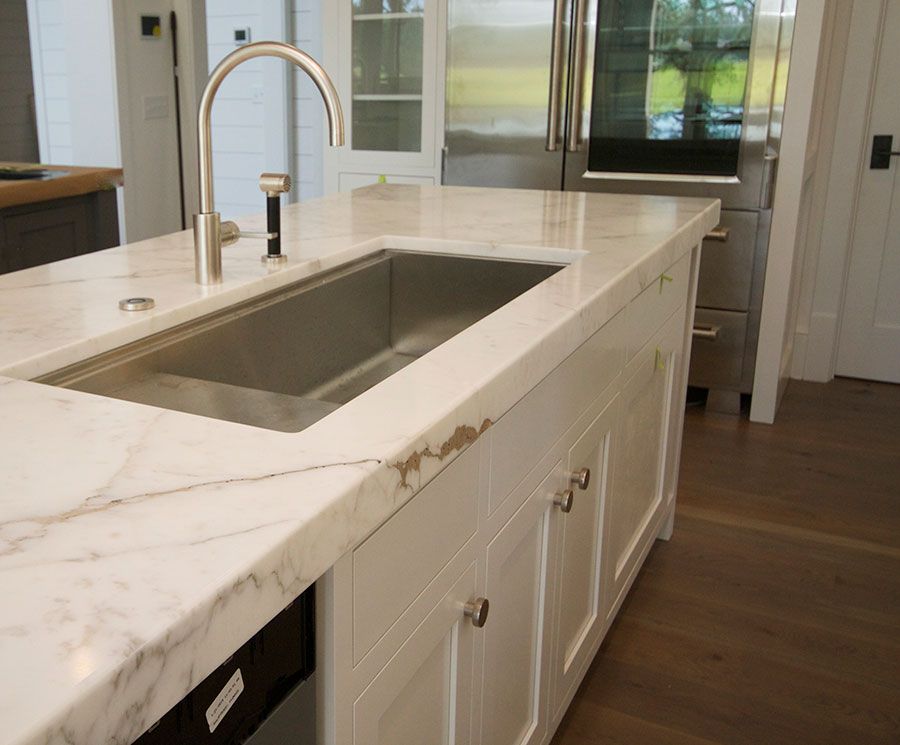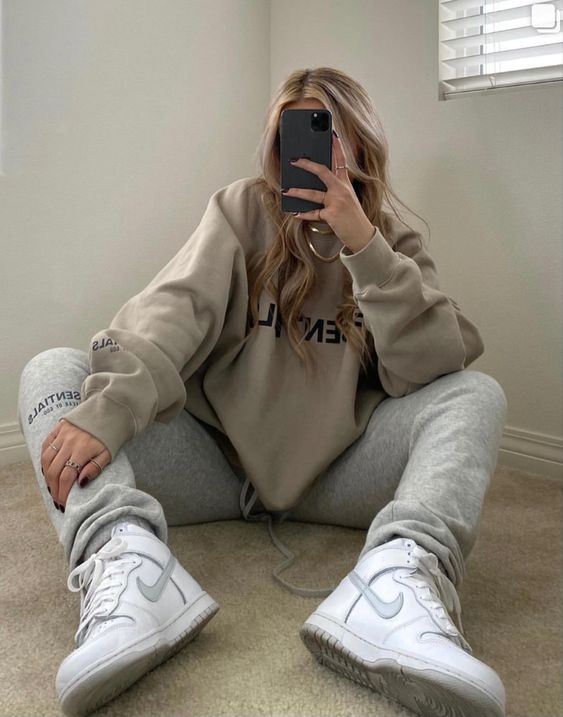Imagine your kitchen as a canvas waiting to be transformed, where the humble backsplash holds the power to revolutionize its entire aesthetic. It’s more than just a protective barrier; it’s the brushstroke of personality, the signature element that defines your culinary space. The backsplash, often overlooked in its significance, plays a pivotal role in kitchen design and renovation. Its primary function as a protective shield against splashes and spills is just the beginning. Beyond its utilitarian purpose, the backsplash serves as a design anchor, a focal point that ties the entire kitchen ensemble together.
This article goes beyond the usual and looks at something special. Instead of sticking to regular tiles and stone, it explores different and unusual materials to change how we think about backsplashes.
Traditional vs. Innovative Backsplash Materials:
Conventional Backsplash Materials:
Conventional backsplash materials like tiles and stone have been go-to choices for years. They’re durable, easy to clean, and come in various styles, making them popular among homeowners looking for reliability in their kitchen design.
Shift towards Innovation in Backsplash Choices:
However, there’s a new trend emerging – a move away from the usual suspects. People are exploring more creative options beyond tiles and stone. This shift reflects a desire for uniqueness and a fresh look in kitchen design. Homeowners now seek materials that speak to their individuality and offer something different from the norm.
Importance of Selecting Unique Materials to Personalize Kitchen Spaces:
Choosing unique materials for backsplashes is about more than just aesthetics. It’s a chance to infuse your kitchen with your personality. These materials create a distinctive atmosphere, giving your kitchen a character that matches your taste and style.
Additionally, these unique materials can be installed in various ways to create a standout look. For instance, thinking about how to install an undermount sink can play a role in the overall backsplash design. The material used around the sink area can complement the sink’s installation, adding to the visual appeal of the kitchen.
The integration of an under-mount sink into the backsplash design offers a seamless and sleek appearance. The material chosen for the surrounding backsplash can accentuate the sink’s installation, creating a cohesive and stylish look that enhances the overall kitchen aesthetics.
Creative Material Choices for Backsplashes:
1. Glass:
Glass stands out for its versatility and aesthetic appeal.
- Transparent, Colored, and Textured Options: Glass offers a range of choices, from see-through panels to vibrant colored variations and textured surfaces. These options allow homeowners to play with light and depth in their kitchen spaces.
- Reflective Properties: Glass has the unique ability to reflect light, brightening up the kitchen and creating a visually captivating ambiance. Its reflective qualities add depth and interest to the overall design.
2. Metal:
Metal brings an unconventional yet stylish touch to backsplashes.
- Variety of Metals: Stainless steel, copper, tin, and other metals offer distinct aesthetics. Each metal type presents its charm, contributing to the kitchen’s character.
- Durability and Contemporary Appeal: Metals are durable, easy to clean, and maintain their sleek appearance over time. Their contemporary look adds a modern edge to kitchen designs.
3. Recycled Materials:
Embracing eco-friendliness and distinctive appearances.
- Reclaimed Wood, Recycled Glass, and Salvaged Tiles: Using materials like reclaimed wood, recycled glass, or salvaged tiles not only adds a unique touch but also contributes to sustainable practices. These materials bring character and a story to the kitchen.
- Contribution to Sustainability: Repurposing materials not only reduces environmental impact but also infuses the kitchen with a sense of history and authenticity.
4. Unexpected Elements:
Exploring innovative materials beyond the norm.
- Fabric, Wallpaper, Chalkboard Paint, etc.: Experimenting with unconventional materials such as fabric, wallpaper, or chalkboard paint presents creative opportunities. These elements offer unexpected textures and visual interest in backsplash design.
- Creative Approaches: Incorporating these non-traditional materials requires unique approaches. They can be used strategically to add personality and a distinctive flair to kitchen spaces, showcasing individual style and creativity.
These material choices go beyond the conventional, offering homeowners an array of possibilities to redefine their kitchen aesthetics with creativity, style, and sustainability in mind.
Customization Options:
Personalizing your kitchen space goes beyond mere functionality—it’s about infusing your unique identity into every corner. The backsplash, often an underestimated canvas, offers a remarkable opportunity for homeowners to imprint their style, tell their stories, and curate a space that resonates with their individuality. From tailoring materials to match specific themes to adding personal touches that breathe life into the design, let’s explore how customization transforms a simple kitchen backdrop into a personalized work of art. We will delve into the myriad ways to personalize and customize your backsplash, turning it into a reflection of your distinctive taste and preferences.
Tailoring Materials to Match Kitchen Themes:
- Harmonizing with Existing Decor: When selecting a unique backsplash material, consider the kitchen’s existing decor elements such as cabinetry, countertops, and flooring. The material should complement these features, either by harmonizing in color and texture or by providing a striking contrast that enhances the overall design.
- Matching Style and Theme: Different materials evoke various styles – from modern and sleek to rustic or eclectic. Ensure the chosen material aligns with the desired style or theme of your kitchen. For instance, a reclaimed wood backsplash might suit a farmhouse or rustic-themed kitchen, while a metallic backsplash could complement a contemporary or industrial design.
Adding Personal Touches:
- Incorporating Personal Stories: Infuse your unique backsplash with personal significance. For instance, if using reclaimed materials, consider their history and origin. A salvaged tile might have a story behind it that resonates with your family or travels. Incorporating such elements adds depth and personal meaning to the kitchen space.
- Custom Designs or Accents: Explore ways to customize the backsplash further. This could involve incorporating custom patterns, hand-painted tiles, or unique arrangements of the chosen material. Adding personalized touches can make the backsplash a focal point that reflects your taste and creativity.
- Showcasing Art or Collectibles: Integrate your artistic inclinations by using the backsplash as a canvas. Display art pieces or incorporate collectibles into the design, creating an artistic and personalized backdrop for your kitchen.
- Family Photos or Quotes: Another way to add a personal touch is by incorporating family photos or meaningful quotes into the backsplash design. This not only adds a personalized touch but also creates a warm and inviting atmosphere.
Customizing your unique backsplash involves thoughtful consideration of the kitchen’s existing aesthetics, selecting materials that align with the desired theme, and infusing personal touches that make the space uniquely yours. Whether through material selection, design elements, or personal narratives, the backsplash becomes a canvas for expressing your individuality within the kitchen.
Combining Materials Creatively:
When it comes to transforming a kitchen space, the artistry lies in the harmonious fusion of diverse materials. Mixing and matching various textures, colors, and patterns for a backsplash opens a realm of possibilities, where innovation meets design to create a truly unique culinary canvas. By skillfully combining different materials, homeowners can craft a backsplash that not only captivates the eye but also encapsulates the essence of their kitchen style and personality. Let’s explore the art of combining materials creatively to elevate the heart of your home.
Mixing and Matching Different Materials:
- Contrasting Textures and Colors: Experimenting with contrasting textures and colors can create visual interest. For instance, combining sleek glass tiles with rough-textured stone or wood can add depth to the design. Mixing materials like metal and glass can introduce a contemporary edge.
- Layering and Patterns: Consider using different materials in layers or patterns. This could involve incorporating smaller sections of one material within a larger expanse of another. Patterns like herringbone or mosaic designs with varied materials can add intricate detail to the backsplash.
- Transitioning Gradually: Gradually transitioning between different materials can create a seamless and sophisticated look. For instance, transitioning from one material to another by gradually blending or introducing a border between the two can create a visually appealing transition.
Creating Cohesive Designs:
- Establishing a Focal Point: Choose one dominant material to serve as the focal point and complement it with secondary materials that enhance its features. This helps maintain a cohesive look while adding visual interest.
- Considering Scale and Proportion: Ensure that the combination of materials maintains a sense of balance in terms of scale and proportion. Avoid overwhelming the space with too many contrasting elements; instead, strive for a harmonious blend that complements the kitchen’s overall size and layout.
- Color Palette and Theme: Maintain a consistent color palette or theme across the combined materials. Whether it’s through similar hues or complementary tones, coherence in color choices helps unify the diverse materials into a cohesive design.
- Gradients and Transitions: Create a gradual transition between materials by incorporating a gradient effect. This gradual shift from one material to another can lend a sense of flow and continuity, resulting in a more cohesive backsplash design.
Combining materials creatively involves thoughtfully mixing and matching various textures, colors, and patterns while ensuring a cohesive overall design. By balancing different materials and considering their interactions, a unique and visually compelling backsplash can be achieved that adds character and charm to the kitchen space.
Conclusion:
In your kitchen, the backsplash isn’t just there for looks—it’s like an artist’s canvas. This article explores special materials for backsplashes, moving away from regular tiles and stone. We’ve looked at cool stuff like glass, metal, and even recycled materials. These materials aren’t just pretty; they tell stories and help the environment too. We’ve also learned how to mix these materials. It’s like creating art—mixing different textures and colors to make the kitchen look awesome and fit together.
Related Topic: Open Sesame: The Essentials of Garage Door Installation



